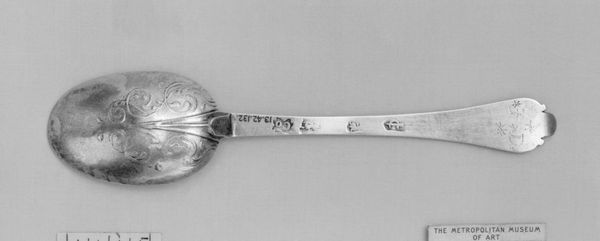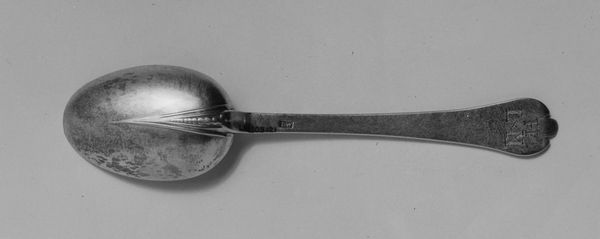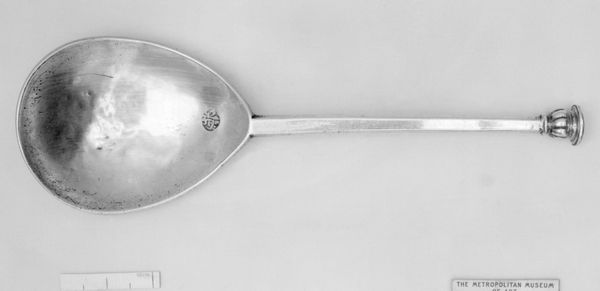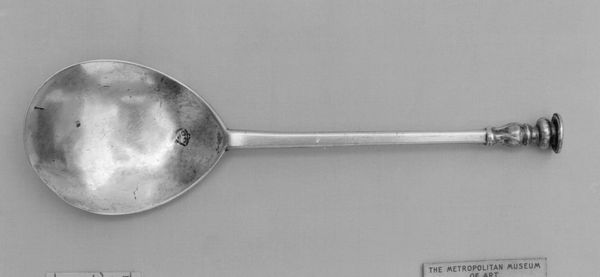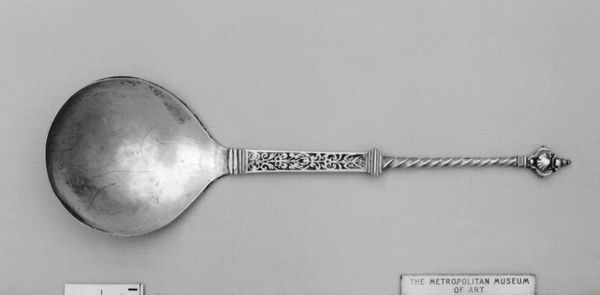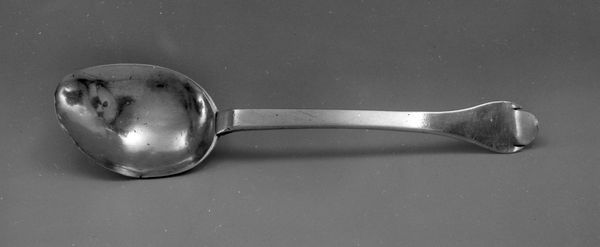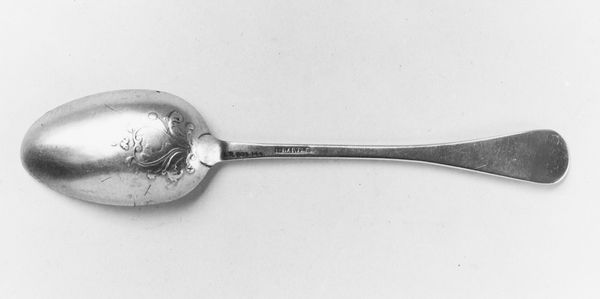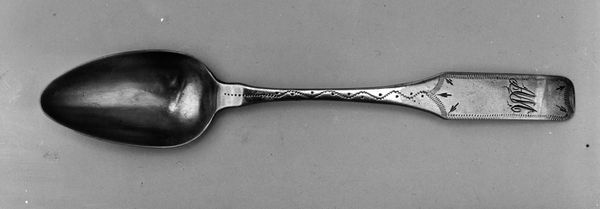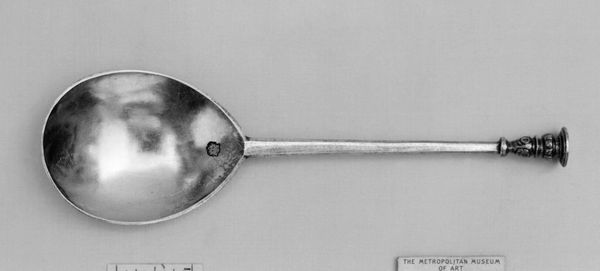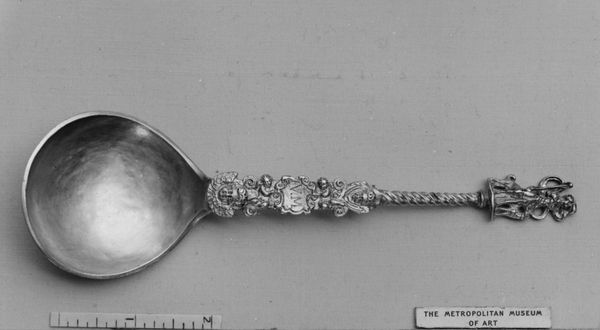
silver, sculpture
#
silver
#
sculpture
#
decorative-art
Dimensions: 6 3/4 x 1 7/8 in. (17.1 x 4.8 cm)
Copyright: Public Domain
Curator: This is a silver seal-top spoon dating from between 1625 and 1645. It's currently held in the collection of the Metropolitan Museum of Art. Editor: The reflections on the silver give the spoon this ephemeral, almost ghost-like quality, like it's flickering in and out of existence. And the narrow handle leading to the ornate top, contrasts to the wider, deeper bowl. It seems incredibly precious. Curator: Precisely. Notice the inscription running along the handle—the detail is so precise, like miniature architectural details. And the engraving in the bowl; see how the patterns create this sense of controlled ornamentation. Editor: The bowl's engraved patterns, don't they remind you of formalized representations of abundance, or perhaps well-being, reflecting what the bowl should contain? It's almost like the exterior imagery mirrors the hopes connected to the object. Curator: Indeed. It brings up the question of utility versus pure artistic merit, right? The silver is, of course, a practical material—durable and easy to clean—but the sheer level of intricate detail, the repetition of decorative motifs...it pushes this humble utensil toward something far more significant. Editor: And that seal-top! Doesn't it call back to symbols of authority and officialdom? When the handle has some wear, I think it also echoes how the symbols associated with family history change and have different meanings to different people. This object has stories to tell. Curator: A superb observation. I hadn’t considered the domestic authority this implement projects in relation to the familial symbols! It reveals its period's concerns with family lineage as decorative expression. Editor: Well, reflecting on it, I suppose a simple spoon holds more social and historical information than meets the eye. A fascinating contradiction, I think. Curator: It reveals an elevated appreciation for surface design—a principle that can still generate discussions among artists today.
Comments
No comments
Be the first to comment and join the conversation on the ultimate creative platform.
